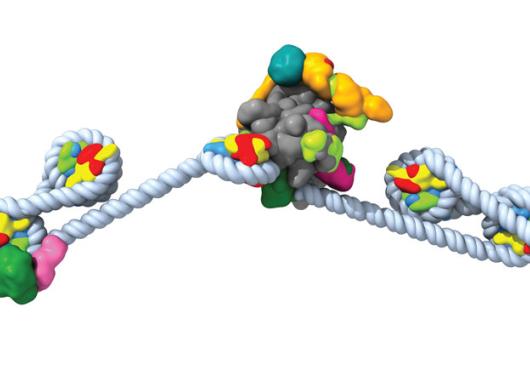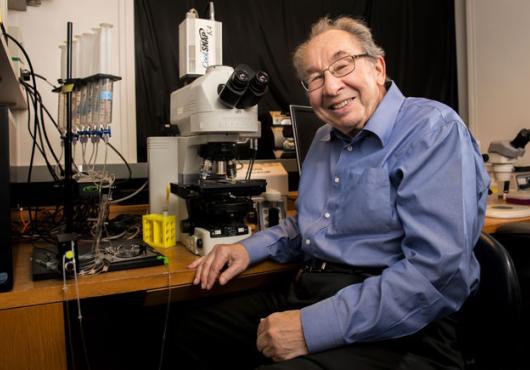
This article is part of Harvard Medical School’s continuing coverage of COVID-19.
As SARS-CoV-2 swept across the world in 2020, scientists worked furiously to develop vaccines that could stop the spread—or at least stave off the worst symptoms of COVID-19. In record time, multiple companies developed effective vaccines that have prevented countless deaths as the pandemic has stretched on.
However, as research continues on how to modify and improve the existing vaccines against SARS-CoV-2, scientists have set their sights on an even more ambitious goal: a pan-coronavirus vaccine that would work against multiple coronaviruses.
“Coronaviruses are a potential existential threat to humanity, and so figuring this out is of highest priority,” said Bruce Walker, the HMS Phillip T. and Susan M. Ragon Professor of Medicine at Massachusetts General Hospital and faculty co-lead of the Massachusetts Consortium on Pathogen Readiness, or MassCPR.
SARS-CoV-2 may be the coronavirus that has loomed large for the past two years, but it is not the only coronavirus that has threatened human health.
In 2002 and 2003, SARS-CoV spread across several continents, and in 2012, MERS-CoV emerged in the Middle East. Both coronaviruses, like SARS-CoV-2, belong to the betacoronavirus group and can cause severe respiratory illness.
“Given that there have been three pandemic coronaviruses, there will almost certainly be more,” said Dan Barouch, HMS William Bosworth Castle Professor of Medicine at Beth Israel Deaconess Medical Center and co-lead of vaccines research at MassCPR.
“Wouldn’t it be good to have a vaccine that had broad coronavirus activity and might be able to prevent or very quickly eliminate the next coronavirus pandemic?”
In a recent perspective in the New England Journal of Medicine, “Universal Coronavirus Vaccines—An Urgent Need,” NIAID Director Anthony Fauci and co-authors make a powerful case for the scientific pursuit of this effort.
Researchers agree that as tantalizing as the idea is, developing a pan-coronavirus vaccine presents a considerable challenge. Such a vaccine would have to elicit broad and lasting immunity against viruses that, while related, also differ considerably, including coronaviruses that have not yet emerged.
Which raises the key question: What will it take to design an effective pan-coronavirus vaccine?
A Scientific Challenge
According to Barouch, a few different strategies could be used to make a pan-coronavirus vaccine. One possibility would be to simply combine genetic material from a representative of each subgroup of pathogenic coronaviruses into a single vaccine.
“If you mix them all together, maybe you end up with a vaccine against the entire class,” Barouch said.
Alternatively, researchers could use computational experiments to design viral protein sequences that represent the various coronavirus subgroups. These synthetic sequences could then be combined into a vaccine.
Yet another option would be to investigate which protein regions are conserved across coronaviruses and use them as a basis for a vaccine.
“These are all intellectually valid approaches, but they have to be tried, and there’s no proof of concept yet in humans,” Barouch said. “I don’t think there’s a single idea that’s ready to go the distance, so there will likely be multiple ideas tested in animals and early-phase clinical trials.”
His own research focuses on combining multiple immunogens—molecules that induce an immune response—to represent the entire subgroup of coronaviruses called sarbecoviruses, which includes SARS-CoV and SARS-CoV-2
A pan-coronavirus vaccine would ideally elicit a strong immune response on two fronts: antibodies and T cells, which offer different types of protection.
Neutralizing antibodies are small immune proteins named for their ability to actively neutralize invading pathogens. These antibodies are the most effective way of preventing infection, which they accomplish by binding to key regions on the surface of the virus so it can’t enter a cell and replicate.
However, neutralizing antibodies typically bind to only a few variable regions on a virus that tend to change quickly as a virus mutates, so antibody response is generally not durable across variants or viruses.
In the case of SARS-CoV-2, neutralizing antibodies elicited by vaccines primarily latch onto two regions on the spike protein of the virus. Yet the spike protein has mutated considerably with each variant, making those antibodies less effective against newer variants such as omicron.
By contrast, non-neutralizing antibodies are generally less powerful in their ability to counter pathogens. These antibodies typically bind to regions of the virus that are more conserved across variants or viruses, but binding to those conserved regions isn’t as effective at blocking viral replication.
T cells offer a different kind of protection. With SARS-CoV-2, for example, they respond to many regions on the spike protein, and thus have continued to react to new variants even as the spike protein has mutated.
However, T cells don’t prevent infection. Instead, they kill virus-infected cells and help clean up the aftermath of infection, which keeps the infection from taking hold and progressing to severe disease, explained Duane Wesemann, HMS associate professor of medicine, member of the Division of Allergy and Clinical Immunology at Brigham and Women’s, and MassCPR member.
“We don’t want just antibody responses without T cells, and we don’t want just T-cell responses without antibodies,” Wesemann added, noting that “anytime you put something in a person, the whole immune system is going to respond to it.” That bilateral response, he said, is a good thing.
For Walker, the T-cell response is particularly intriguing, since it can target multiple proteins made by the virus, including some that may be conserved across viruses.
One possibility, he said, would be to make a T-cell based vaccine that incorporates essential viral proteins that aren’t spike proteins and that are mutationally constrained enough that they don’t change as the virus replicates. “To me, that’s a promising approach to something that’s more broadly cross-protective,” he said.
Realistic Goals
Any vaccine that attempts to target multiple viruses is going to be less specific, and thus less effective at warding off infection, than one tailor-made for a single virus. However, researchers say, perhaps that’s OK.
“Even if a vaccine had only moderate potency, it might be good enough to either stop a virus at its source, or significantly delay the introduction of the pandemic to the world,” Barouch said.
Walker agreed, adding that a reasonable goal is a vaccine that prevents severe illness and death, and results in asymptomatic or mild infection.
“A vaccine that prevents any infection by any coronavirus would be great, but I don’t think that’s realistic at this point,” he said.
Wesemann pointed out that a two-dose vaccine regimen for SARS-CoV-2 didn’t prevent infection from the omicron variant, but still largely prevented hospitalization and death.
Had these vaccines been available at the beginning of the pandemic, even at that lower level of effectiveness, the human toll and devastation would have been vastly diminished.
“I think countless lives would have been saved,” Wesemann said.
For Walker, a laudable—and perhaps more realistic—goal would be to develop a pan-coronavirus vaccine that needs to be given once a year, like the flu vaccine.
“The Achilles’ heel of these approaches is the fact that these viruses mutate and change, and in ways that are not entirely predictable,” Walker said, so a pan-coronavirus vaccine may need to be tweaked to keep up.
The researchers agree that an intermediate step on the way to a pan-coronavirus vaccine is one that works against all SARS-CoV-2 variants.
In fact, studies have shown that simply giving a third dose of an mRNA vaccine induces a broader and more even neutralizing antibody response across SARS-CoV-2 variants—a point that Wesemann explored in a recent commentary in Cell, “Omicron’s message on vaccines: Boosting begets breadth.”
Moreover, “we’ve seen that the T-cell responses are intrinsically cross-reactive for SARS-CoV-2, and the cross-reactivity is extensive,” Barouch said. It is these T-cell responses that likely stave off severe symptoms in fully vaccinated people who become infected with the omicron variant.
A vaccine that prevents any infection by any coronavirus would be great, but I don't think that's realistic at this point.
Bruce Walker
HMS Phillip T. and Susan M. Ragon Professor of Medicine at Massachusetts General Hospital and faculty co-lead of MassCPR









